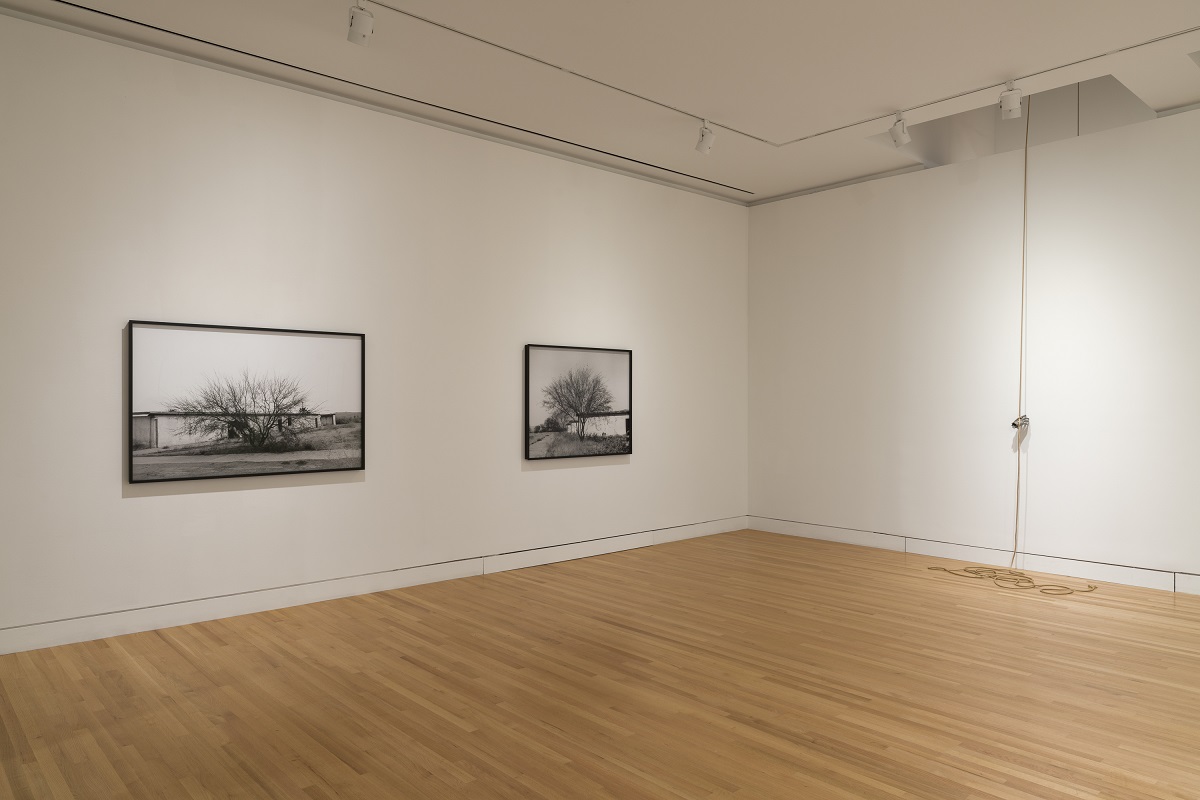Frye Favorites is a series in which members of the Frye’s staff and community share their perspectives on memorable exhibitions and works from the museum’s collection. This post features Blake Nakatsu, Exhibit Developer and YouthCAN Program Manager at the Wing Luke Museum. Nakatsu reflects on Embryonic Vestige (2019), a favorite work from exhibition Kelly Akashi: Formations, which was recently on view, from June 17–September 3, 2023.

Installation view of Kelly Akashi: Formations (with Embryonic Vestige at right), Frye Art Museum, Seattle, June 17–September 3, 2023. Photo: Jueqian Fang
I walk into the gallery space and am confronted by muted tones. Large, cement-like blocks (which I learned were conceived by Akashi as "rammed earth pedestals" and made from a mixture of cement and earth materials) confound me with disbelief that the structural integrity of the gallery floor could confidently sustain their weight. Either way, these industrial masses serve as grave but powerful pedestals for the assortments of immortalized witnesses to internment.
But vying for my attention, contrasting against the dense concrete, is the suspension of materials from above. A glass form suspends into the gallery tied by a rope, which seemingly vanishes into the ceiling framework. It beckons me to stand close and peer up to realize that the rope connects to the adjacent space.
I recognize a clean split in the molding at the foot of the gallery wall, and I try looking for a seam, but I’ll tell you, that spackle and sand job was immaculate.
Making my way through the exhibit, enveloped in Akashi’s petrified forest, a delicate balance is occurring between form, material, and my own sense of time. I come across the other side of the faux-wall, pretty much skipping some artworks to find out what’s acting as the counterbalance. The rope comes back down to constrict a hand whose fingertips graze the wall. The rest of the slack lies limp on the floor. I’m fascinated by the tense play between two objects pulling on one another out of sight, from different gallery rooms. My heart drops as I’m reminded of the tragic love story between the moon and the ocean; how the ocean is so moved by the moon, but they will never touch.

Installation view of Kelly Akashi: Formations (with Embryonic Vestige at right), Frye Art Museum, Seattle, June 17–September 3, 2023. Photo: Jueqian Fang
The text on the gallery wall references the “120,000 Japanese Americans who were forcibly removed from their homes and incarcerated” in concentration camps during World War II. As a resident of Seattle’s Japantown, my after-work jogs lead me up Jackson Street to Pratt Park, past the Kawabe House and the old Keiro site where my aunties lived and took their last breaths. Sometimes I hook around 15th and Alder, past the home where my dad and uncle took their first steps. And when I get back home to our meager six-block Nihonmachi, I’m reminded that it once stretched 72 square blocks, where our ancestors created a community.
I’m not going to try to read too far between the lines, rather let the artwork's impression smolder inside me, but the weight of the two corresponding forms in Embryonic Vestige, connected but not together, reminds me of how we are tied to our past, or maybe our ancestors, but can’t relive it as it once was. I can’t help but to be a little jaded. Akashi’s interrogation of inheritance pervades the Frye’s galleries and seeps into me.
I think about how these works live outside of an enclosed frame, refusing to rest behind glass, actually engaging the gallery space. I think about the time that elapsed in between drying rammed earth slabs. I think about the construction of the seamless gallery wall, and the relationship between the gallery space itself and the artwork, as if they’re in a complicated dance. All together, the process laid bare speaks of a dynamic procedure and experience of site-aware installation art, which communicates to me much more than a finite snapshot in time.
—Blake Nakatsu, Exhibit Developer and YouthCAN Manager, Wing Luke Museum